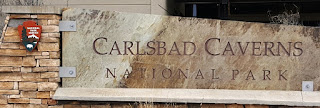 WESTWARD HO
WESTWARD HO
Family, Caverns and Finally Home
Final Journal #19
November 8 – 15, 2018
We make friends with every roadside rest area, a couple Cracker Barrels and two Walmarts. Breaking the rules of no interstates and no more than 330 miles a day, we move along at 400 to 500 miles a day. Only rule we keep is not to travel after dark.
To break the monotony we listen to Lee Child and Stephen King thrillers on audio, pick up some geocaches along the way and treat ourselves to dining out at our favorite travel restaurant Cracker Barrel.
There are reasons for this madness. The Florida Panhandle is in no mood for tourists … Hurricane Michael did not leave much along the coastal areas. Our volunteer responsibilities are calling us. And we promise our children that we would be home for Thanksgiving (a role reversal here).
We had a great visit and some wonderful fun with the fur babies.

Thank you all for following along with us on our travels. Your comments and reactions are treasured and we sincerely hope you enjoyed our journal-blogs.
Dan & Vicki Rector and our Coyote.
To break the monotony we listen to Lee Child and Stephen King thrillers on audio, pick up some geocaches along the way and treat ourselves to dining out at our favorite travel restaurant Cracker Barrel.
 |
Geocachers will not want to miss this one in Carlsbad |
There are reasons for this madness. The Florida Panhandle is in no mood for tourists … Hurricane Michael did not leave much along the coastal areas. Our volunteer responsibilities are calling us. And we promise our children that we would be home for Thanksgiving (a role reversal here).
MORE FAMILY
However, our next stop is Dan’s sister and her husband, Marilyn and Chris and their four fur babies. As hosts of a campground in Carlsbad about 20 miles from the Caverns, they set us up as a great campsite so we could visit.
We had a great visit and some wonderful fun with the fur babies.

CARLSBAD CAVERNS
It is probably 35 years since we had been there and we excited about a second visit. Much has changed. We remember a challenging hike to the bottom over rocks and trails with an elevator ride back up. Today we find a continuous paved trail with handrails all the way to the bottom at 850 feet below the surface. The plan is to hike down and then come back up on the elevator.OOPS .... NOT TODAY
However, we never make it to the great room at the bottom. Not today. The elevator is not working. They warn us that we have to hike back up. So, not sure how far we can go, we head on down. We meet many tired, panting, exhausted people coming up … many who had gone down in the elevator and were not planning this hike up … many of them our age. That new path is wide enough for a wheelchair and sure enough, a couple people have to be assisted up by rangers who bring electric wheelchairs down to get them. About halfway down at 375 feet, we realize that going down is easy but we might need one of those chairs to get up, so we turn around and head back up.
HEADING HOME
Our trip consists of 8,807 miles total in 11-weeks, good family time and so many memories that our aged minds probably will not retain them all. Nonetheless, we enjoy every single moment.
The last leg of our trip is north through New Mexico trying to get home to Colorado between snow storms. If you think NM is vast lonely stretches of nothing ... you are right.
EXPLORERS EXTRAORDINAIRE
In the last four years, we have explored the entire North American Continent. We have taken a number of small trips around the interior of the United States. There was a 10-week trip to the NW corner through Canada to Alaska in 2015; a 9-week trip to the NE Maritimes visiting Newfoundland and Nova Scotia and the NE states of the U.S. in 2016; 2017 brought us to the total solar eclipse in Oregon; and this SE trip. What about the SW? We lived there for 40 years in California, exploring it all.
Thank you all for following along with us on our travels. Your comments and reactions are treasured and we sincerely hope you enjoyed our journal-blogs.
Dan & Vicki Rector and our Coyote.


















































